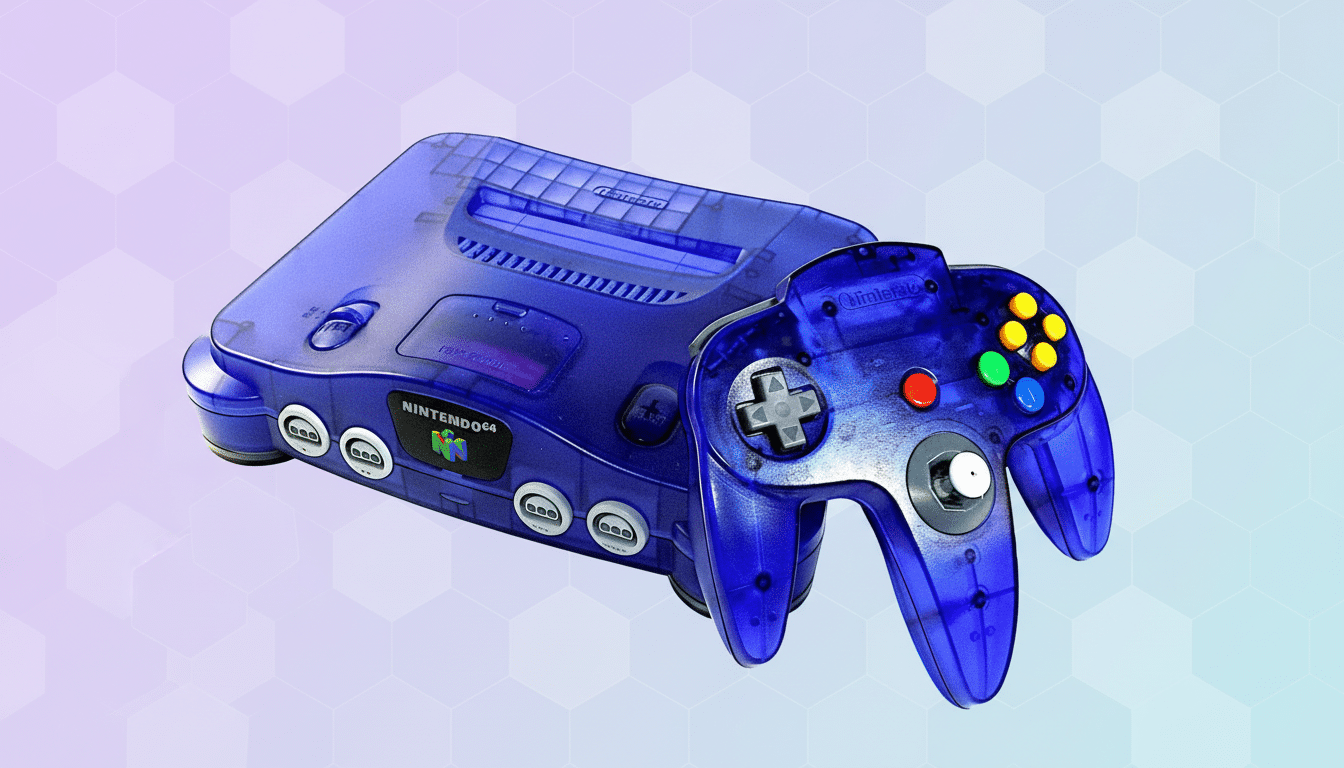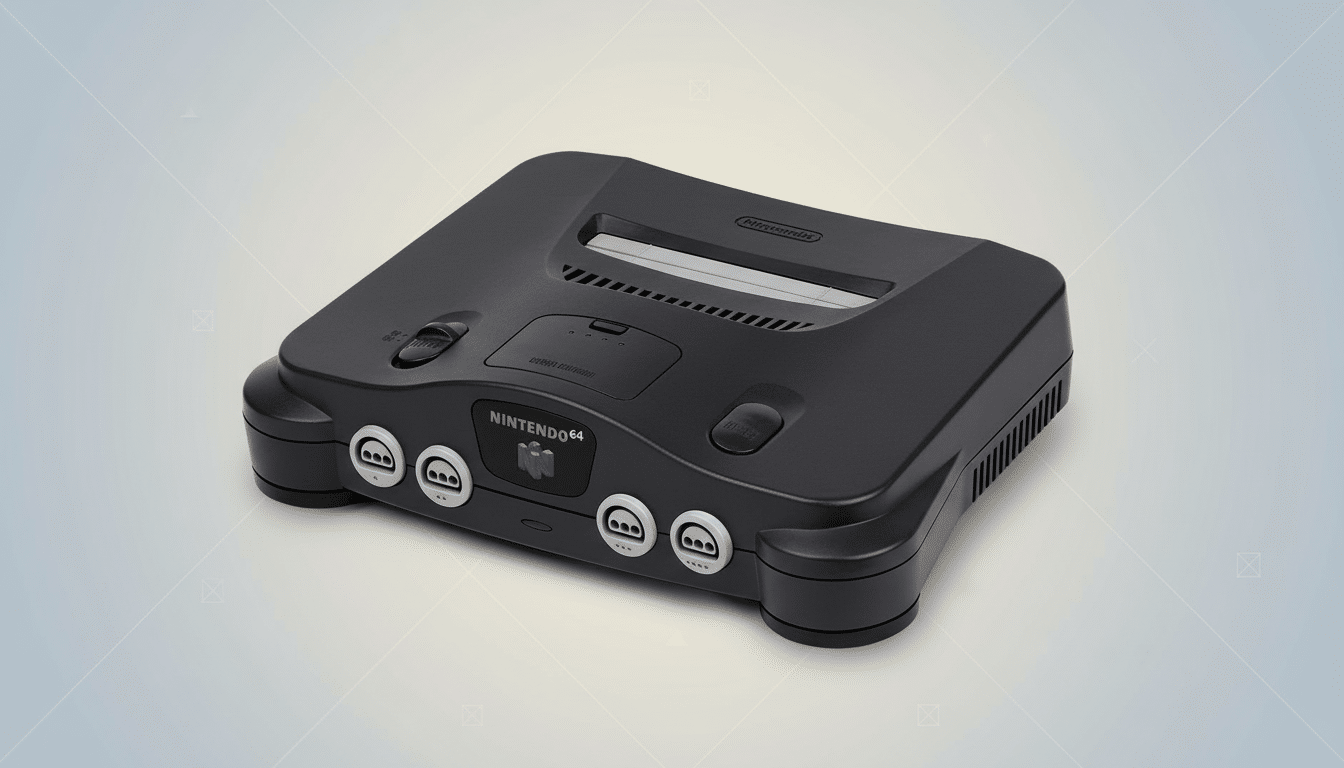The ModRetro M64, a modern-day FPGA-powered redux of the Nintendo 64, is finally working and stepping out into public at the Portland Retro Gaming Expo.
It pledges to support native cartridges, work with MiSTer cores for other legacy systems, and have a design inspired by the original hardware while striving for zero-compromise performance.

Hands-on demo at Portland’s top retro gaming show
ModRetro is going to be showing off a playable version of the M64 in booth 601, giving everyone their first chance to see something that has lived in teaser land up until this point.
The company has confirmed that there is analog video output, a key for retro purists hoping to pair the console with a CRT for genuine low-latency play and proper 240p/480i behavior. Expect the focus to be on physical I/O, video modes, and controller options, as those are likely to determine how well the M64 will slot into existing setups.
Early visuals suggested: a similarly compact design reminiscent of the original console but not a clone of it. That design restraint counts; collectors are often looking for something that will integrate with vintage hardware, yet signal modern reliability and support.
Why FPGA? And Why It Matters for N64 Accuracy
Unlike software emulation, FPGA hardware implements console logic at the circuit level, allowing for cycle-accurate operation and predictable latency. That is quite an accomplishment for the N64. The platform’s oddball Reality Signal Processor and Reality Display Processor pipeline, combined with the tight timings of RDRAM requirements and its unique microcode, have continuously stumped emulators. The FPGA approach is to emulate that complexity rather than simulate it.
The M64 is a derivative design of the open-source N64 core (MiSTer project), but with custom hardware to make clocks and memory behavior stable. Previously, tests from community outlets such as Digital Foundry have shown potential sub-frame latency on FPGA systems—a crucial advantage for speedrunners and competitive players who require pinpoint inputs in games like F-Zero X and Super Mario 64.
Key features of the ModRetro M64 and compatibility
It takes original N64 cartridges, so you can continue playing from your own old-school collection, and all the saves are saved like they used to be.
If this isn’t amazing, I don’t know what is.

ModRetro says the M64 plays original N64 cartridges, allowing you to continue using your library of games and real save files. That in and of itself is huge; cartridge handling (and save memory support, as well as Controller Pak behavior) can make or break an N64 clone. Save types—such as SRAM, FlashRAM, and Controller Pak management with titles like Pokémon Stadium—will obviously be a key test of hands-on demos.
Further than the N64, the M64 can play MiSTer cores for a wider range of systems, including the NES, SNES, Genesis/Mega Drive, and Neo Geo. Your mileage may vary (YMMV) depending on the maturity and performance envelope of the cores, but the MiSTer ecosystem offers an open, transparent, projects-in-the-open route to much more frequent revamps.
It has emphasized the analog output in public; more video options have been poorly detailed. Video purists will be looking to see high-quality upscaling, optional scanlines, and low-lag deinterlacing if digital modes are included. Controller support is yet another question mark—original ports, modern USB versions, and wireless solutions address completely different potential players, from tournament organizers to living-room casuals.
A Rapidly Emerging Alternative to Analogue 3D
The M64 comes to a market that’s already been prepped by another long-awaited FPGA console, the Analogue 3D—which has also turned heads for its proposed flawless modern output and high-end construction quality but similarly got delayed multiple times. With the M64 on the table in public, the momentum story turns—whoever becomes the first to ship an affordable machine with stable firmware, solid cartridge compatibility, and good video will have won over the community.
That’s a promise to keep if historic precedent is any indication: ModRetro’s previous work includes the Chromatic, a high-end Game Boy-grade handheld that won raves from reviewers for its build materials and screen quality. That pedigree and a $199 early-bird price for the new M64 imply an attempt to undercut rivals while still delivering with hardware build and support. The open-source core under the hood also means faster iteration and community-verifiable fixes—useful in the notoriously difficult N64 space.
What to watch before clicking that preorder button
Three checkpoints to gauge whether the M64 does what it intends:
- Video: clean analog output on CRTs together with sharp scaling and accurate colors on modern displays; scanlines if you want them.
- Input: if your game has a tight timing window, you need true analog stick curves and very low input latency, or at least the option to enable it.
- Saves and peripherals: smooth compatibility with Rumble Paks, memory types, and Controller Paks will separate an awesome clone from a good one.
Nintendo’s original N64 sold over 30 million units worldwide, according to company financials, and nostalgia for its library is still strong. If the M64 lives up to its FPGA pitch with authentic cartridges, MiSTer flexibility, and respectful industrial design, it could provide retro-heads a modern and reliable means of experiencing that catalog as it was meant to be played—on real hardware logic with minimal compromise.

